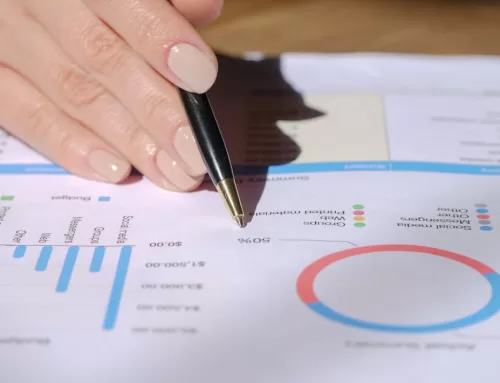QuickBooks Online users have been reminded a lot about the new (well, released in 2015) QB app and we’ve been encouraged to download and use this instead of viewing QBO through conventional browsers. You may think that apps are only for cell phones but the QBO app is a specialized browser designed and tuned to run QBO only on Windows computers. For me, the big thing is that QBO runs faster. Usually. This alone is enough to make me a convert, but there are other benefits too.
Here are a few things to know about the QuickBooks Online app . . .
QuickBooks Online Install and Login
Once the QBO app is downloaded and installed, click to open and sign in from the new shortcut on your desktop. One little glitch in my opinion is that somehow I am seeing the same shortcut icons for QuickBooks Enterprise and the QBO Online app. Which is which? Clicking the wrong one can cost a lot of time, so I renamed the new icon to “QBOapp” to avoid confusion.
Once things are setup and running, you will not want to go back. But during the QBO app sign in, a perplexing message may appear:
“If you are an Accountant and trying to sign in to a client company directly, please sign in to your Accountant company first, then switch to the client company.”
For me, this was difficult to understand, despite my several decades of learning English. If this occurs, you are in a loop. The only choice then is to sign out. None of the other menu items or links will work. So sign out and wait until the app closes, and then restart the app and login using your regular QuickBooks Online user name and password.
After logging in you will see the list of your clients, including your own company, and this is the only place where the login loop may be broken: be sure to login to your own company (e.g., “Aaardvark Bookkeeping & Accounting” and not a client. Then the QBO app opens, with a regular Windows top horizontal navigation bar including the familiar drop-downs of: File, Edit Create, Company, Navigate, Reports, Favorites, View, Window and Help. You can also do “Go to client’s QuickBooks” here.
Why do they list your clients during the first phase of login if selecting anything but your own Accountant company causes a login failure?
In any case, once you’re in it’s worth it. You will learn to appreciate the speed and new options (some discussed below). Open the QuickBooks Online app from any shortcut (desktop, taskbar, etc.) And in future sessions the app simply opens without any login grief at all so that’s great.
Is the QuickBooks Online App a Program?
The QBO app then appears just like a regular Windows program – it’s on your desktop as a shortcut. But remember it’s not really a program – it’s a link pointing to \QBWinClient.exe, which then connects to and opens QBO in the cloud. Since it’s not a program, the QuickBooks Online app is not seen under Control Panel > Programs and Features. In WIN task manager, this app appears as “QBWinClient (32 bit)” and is not a resource hog.
No Auto Logoff
Once the app is opened, users are not kicked-off after periods of inactivity. This is a convenience – but be careful. As usual, it’s best to sign out of Windows when it’s time for a break to protect QB, spreadsheets, pdf and all other confidential client data.
Top Horizontal Navigation Bar
The top nav includes File, Edit Create, Company, Navigate, Reports, Favorites, View, Window and Help. Most are what you’d expect (from QB desktop) however there are a few pleasant surprises:
- Create – Just about all data-entry can be done here including receipts, invoices, payments on invoices, bills, bill payments, checks, journal entries, transfers and deposits.
- Navigate – Opens new QBO windows for vendors, customers, employees, banking and more.
- Favorites – You can Favorite a page here, just like making a Favorite or Bookmark with Internet browsers. These are similar to Customized Reports but can be selected faster.
Faster QuickBooks Page Loads
The QBO app screens appear much faster than through conventional browsers most of the time, but occasionally things slow to a crawl. Overall, however, performance is much faster and time is money.
To test this, just run a report and see how fast the options appear, and then how fast the report is generated. For example, on the left vertical navigation area try Reports > Balance Sheet, and then click the Checking Account to see a transaction report.
Keyboard Shortcuts
For even faster action, do Help > Keyboard Shortcuts. A one page pdf file will open which should be printed for easy reference. Like maybe scan them over during lunch to learn some cool new options. For example, some of my favorites are:
- Alt+B – Opens a new window of bank and credit-card accounts with transactions for download.
- Alt+V – Opens the Vendors page with no other nav bars, so screen space is maximized.
- Control-I – Opens the screen for a new invoice, quite similar to QuickBooks desktop versions.
- With a date field selected, enter “H” and the last day of this month is automatically entered.
QuickBooks Windows app shortcuts are shorter and more robust than through traditional Internet browsers.
Multiple QBO Windows
The QBO app will open multiple windows which saves lots of time when going back-and-forth between reports. For example, the check register and a specific checking account transaction can be opened and viewed in dual windows. Or a list of last month’s sales and a selected invoice. Just be sure that on the top horizontal navigation bar Window > Menu Items Open New Window is selected. It’s also then possible to move windows anywhere on the screen or across monitors so that two open windows can be viewed on two different monitors at the same time (and yes, you should have at least 2 monitors).
For more info on opening multiple windows, choose Help > Using Multiple Windows.
Also note that all windows refresh automatically. If a change occurs in one window, all other open windows will update too.
More QBO Screen Space
Finally, QuickBooks Online app users will soon see that much more screen space is available for viewing client data rather scrunching this among navigation menus (which are often redundant and a waste of screen space for experienced users). There are easy options to toggle off the menus to free up space and gain more screen real-estate for your purposes.







